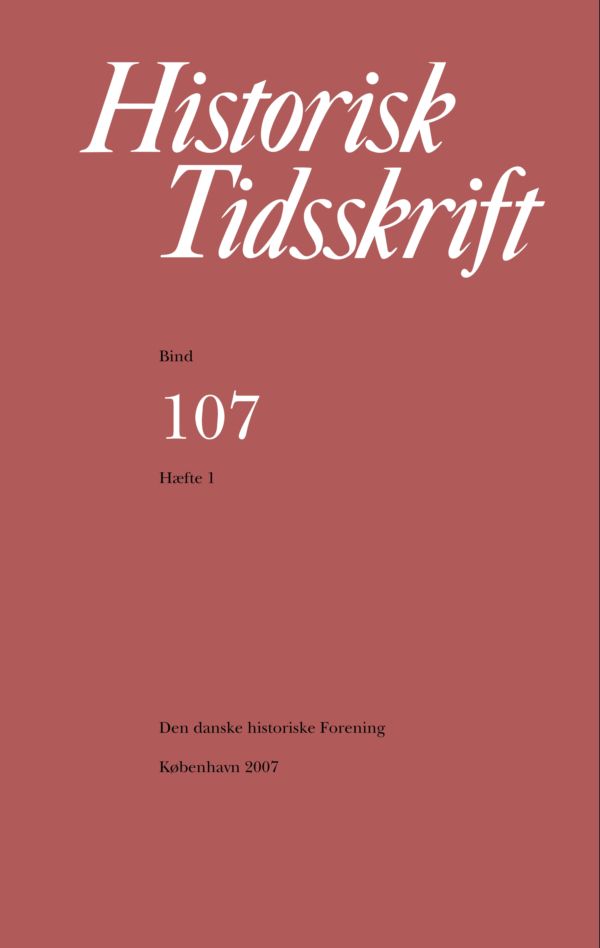Parallelle retsordener. En retspluralistisk tolkning af jura og retskultur i Danmark fra slutningen af det 17. til begyndelsen af det 20. århundrede
Resumé
Parallel Legal Systems: A Legal Pluralist Interpretation of Law and Legal Culture in Denmark from the End of the Seventeenth to the Beginning of the Twentieth CenturyDenmark has a long tradition of parallel and simultaneously functioning legal systems. This pluralist phenomenon has, however, drawn little attention from scholars doing research on the history of law. For one thing, modern legal thinking is founded on monism, which conceives law as a single coherent system established by the state. For another, the parallel legal order described in the present article rests on unwritten custom, the validity of which has gradually been marginalized. A legal pluralist analysis of Danish Law (1683) reveals, however, a picture of two legal orders, each operating on its own set of legal principles. The one was universally valid for all the subjects of the realm and regulated by royal power and the courts. The other was a legal order valid within the domestic domain; it was hierarchical and encompassed all the members of a household with regard to their mutual relationships; it was regulated by custom and coercion proper to the domestic relationships of dominance and submission.Both legal orders were conceived as inherent in natural law, which was the prevailing legal philosophy in the eighteenth century. According to this concept there existed two co-ordinate legal areas. “Assembly lawv” (Tingsret) functioned in an egalitarian manner between equal parties in the area of property and contract. “Personal law” dealt with the unequal domestic relations within the household. At the time of Danish Law and well into the eighteenth century manorial economy was predominantly regulated in accordance with the custom-sanctioned relationships of submission embedded in “personal law.” But at the end of the eighteenth century a change took place in legal dogma allowing copyholders to be transferred from “personal law” to “assembly law.” In the legal literature of the time the peasant is increasingly treated as a “contracting party.” This new legal thinking contributed in no small measure to the arguments behind the extensive agricultural reforms at the turn of the eighteenth century.Among the peasants, however, the reforms left both crofters and servants in their traditional relation of submission to the head of the household: the crofter subordinate to the landowner, the servant principally to the copyholder. The fact that crofters, as late as 1848, were still subjected to the landowner’s right to inflict corporal punishment can be explained by rules based on household law.The political reform movements of 1848-49, implementing a broad suffrage with the enactment of the Constitution of 1849, emancipated the crofter politically and socio-economically from legal subjection to the landowner.Servants, however, remained subject to household law. There was, indeed, a certain element of contractual law in the many new ways of terminating servant status in the 1854 Act Regarding Domestic Servants, but the head of household still held the right to demand submission; and although he no longer held the right to punish disobedient servants, he had recourse to state authorities to do it for him. The law had but few traits in common with otherwise prevailing contractual law. In this instance the traditional legal order persisted.It took decades of negotiation to put through a reform to the benefit of servants. To some extent this was because the Social Democrats has difficulty in arriving at a balanced position. For it was no simple task to construct legal measures that both protected servants against exploitation and at the same time upheld their status as independent individuals entering freely into contract. The Constitution of 1915 and the Domestic Assistant Act of 1921 at last released servants from the authoritarian rights of the head of household, finally burying the remains of the old household legal order.Translated by Michael WolfeDownloads
Publiceret
Citation/Eksport
Nummer
Sektion
Licens
Ophavsret til bidrag i Historisk Tidsskrift tilhører forfatterne og Den danske historiske Forening som udgiver af Historisk Tidsskrift. For illustrationer gælder den ophavsret, som står anført i billedteksten. Ophavsretslovens almindelige bestemmelser gælder, hvilket vil sige, at ophavsretten gælder i 70 år efter forfatterens død. Bidrag i Historisk Tidsskrift må derfor, med forbehold for en ”moving wall” på tre år, frit downloades, læses, gemmes, anvendes og citeres (med kildeangivelse) i privat og videnskabelig sammenhæng, men de må ikke helt eller delvis genudgives af tredjepart, heller ikke i redigeret form, uden tilladelse fra forfatterne og Den danske historiske Forening. Henvendelse skal i så fald rettes til Historisk Tidsskrifts redaktion på histtid@hum.ku.dk.





